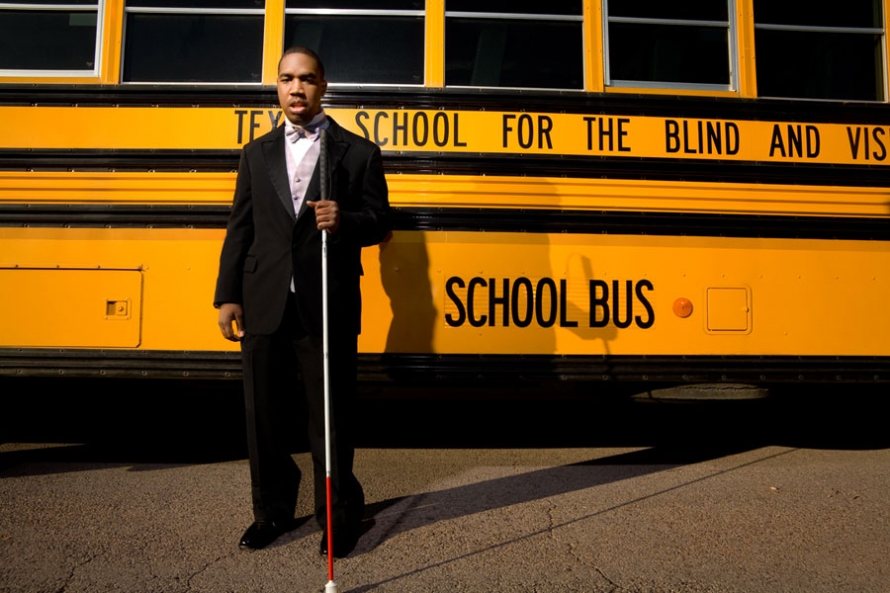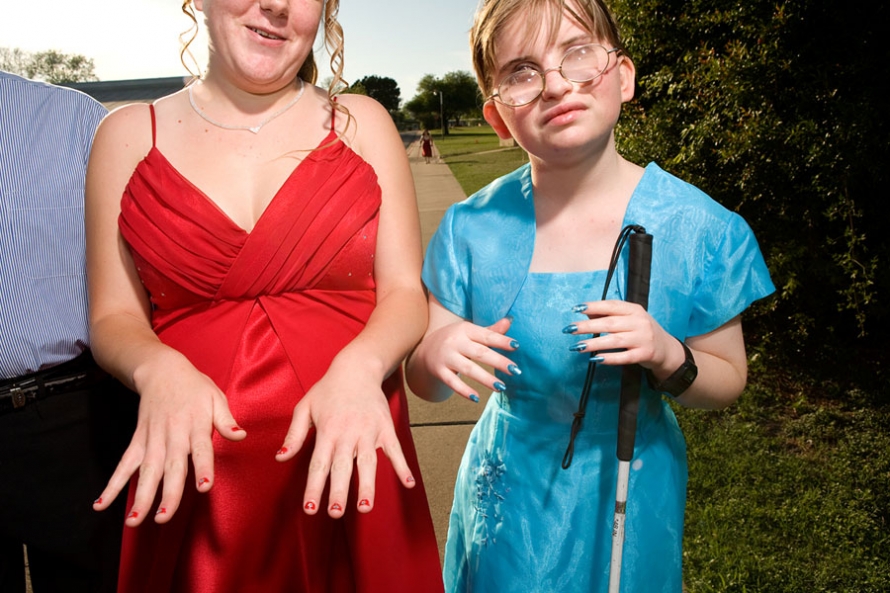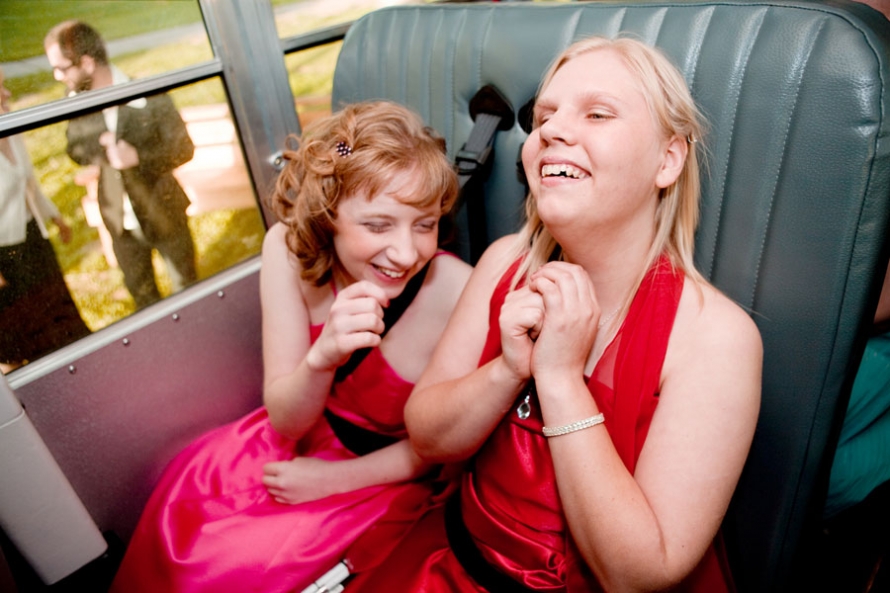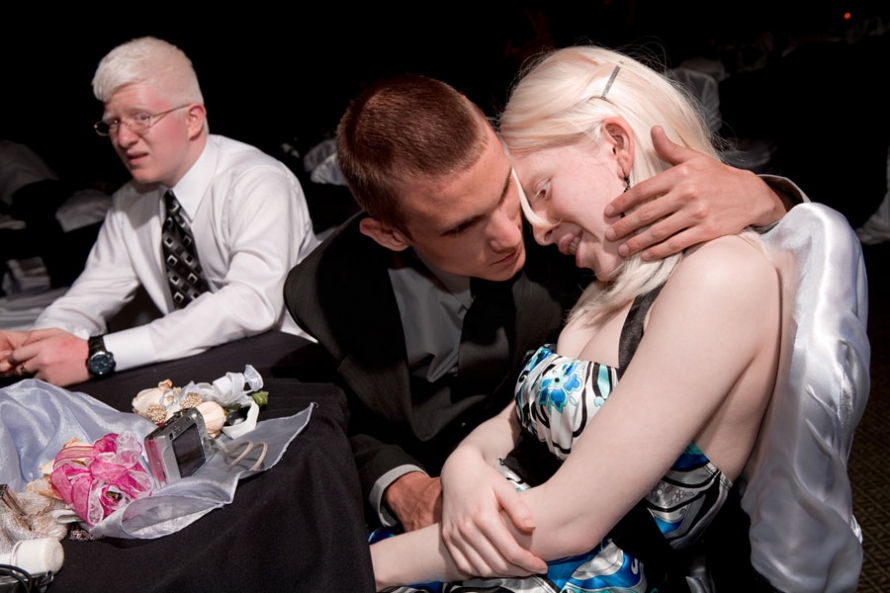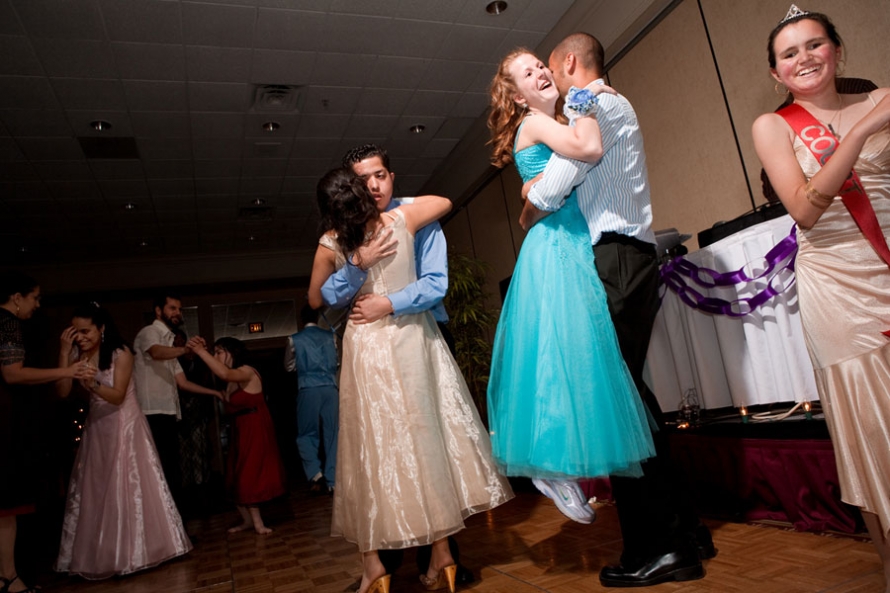Sarah Wilson’s photos from the prom for the Texas School for the Blind and Visually Impaired trigger one of those reality-check moments for sighted audiences—of course visually impaired students go to the prom, and however different their experiences at the dance, you’ll recognize your own prom night in Wilson’s celebratory pictures.
Sarah Wilson was born in Durham, N.C. and currently lives and works in Austin, Texas. Her photography has been acquired by the permanent collections of the University of Texas and the Museum of Fine Arts Houston. “Blind Prom” is being shown at Foley Gallery through July 31, 2009, and at PhotoNOLA in December.
How did you end up shooting prom night at this particular school?
In the fall of 2005, my boyfriend Keith Maitland began working on a PBS-funded film, The Eyes of Me, that he would shoot, direct, and edit over the following three years. The film documents four blind teenagers as they attend a single school year at the Texas School for the Blind and Visually Impaired. I served as the stills photographer and field producer for the film, and when the spring rolled around, I volunteered to be the school’s prom night photographer. The night was so special that I decided to photograph prom again. Although I couldn’t be there in 2007, I did shoot in 2008 and then pitched the story to Texas Monthly magazine. I loved the way the article turned out, so I shot again in 2009 and plan to shoot next year as well.
Can you describe the atmosphere of prom night for us?
TSBVI is a residential school, so the students live there on campus. I usually arrive at three p.m. or so to photograph preparations. Every year a group of sorority sisters from the University of Texas show up with curling irons, nail polish, and makeup to help the girls get ready. Once everyone is in their dresses and tuxes, the students congregate by the big yellow school bus, awaiting their ride over to the Crowne Plaza Hotel.
Upon arrival at the hotel, dinner is served. Then everyone gets out on the dance floor, singing along and line-dancing to loud pop and hip-hop songs. With an hour or two left in the night, the prom court crowning begins. In the midst of all of this, couples leave the dance floor, two-by-two, to have their formal portraits made. Each year I paint a portrait backdrop appropriate to the prom theme. Last year was “Enchanted Gardens,” and this year was “Mardi Gras.” After everyone has been through the portrait line at least once, I get to emerge from the portrait room to shoot the last dance at midnight.
The atmosphere of the night is generally euphoric, barring the occasional tears and heartbreak due to someone’s date dancing with somebody else instead. Then again, I’m reminded that this is pretty standard to all proms.
Is there a prom queen and king?
Yes, which are voted on by the student body. The significance of the evening really starts to sink in during the crowning. In any other school, these students might not have the opportunity to be the prom king or queen, or even be invited to prom at all. I think the difference here is that, amongst other visually impaired teens, there is a greater opportunity for a fulfilling social life. One of my favorite students was crowned king this year. Everyone was chanting his name. I wept and I couldn’t focus my camera.
Why is a blind prom somehow more interesting to sighted (and visually impaired) people than your average prom night?
Most of us have archived memories of our own prom nights, so we can fully appreciate both the fun they are having and also sympathize with those awkward teenage years. The compelling difference captured in these images, to me, is that these kids seem to be less encumbered by the filter of self-consciousness or vanity. It’s as if the most exuberant emotions of the night are shared in their purest form.
I can’t help but wonder about representations of beauty at prom. The teens in your photos are beautifully dressed for the dance, which makes sense, but is there a way in which the idea of looking beautiful for prom is different at TSBVI?
I remember last year overhearing a conversation a couple was having as they were reuniting before prom. She grabbed his hand and ran his fingers along the sequins of her dress, to the curls in her hair, and to the strand of pearls around her neck. His response was an exuberant, “Wow, you look so beautiful!” I know that she felt beautiful.
I know you’ve documented a number of distinct sub-cultures including pageants. How did your blind prom project compare to other documentary work you’ve done?
Maybe this is just my imagination, but I believe that the participation of a professional photographer at an event helps to bring an element of significance and celebration. Therefore the difference is that, although many of these kids will never see the pictures of themselves, they understand what photography and portraiture symbolizes. It reinforces the fact that there is something significant happening—that this event or this person should be remembered and honored.
